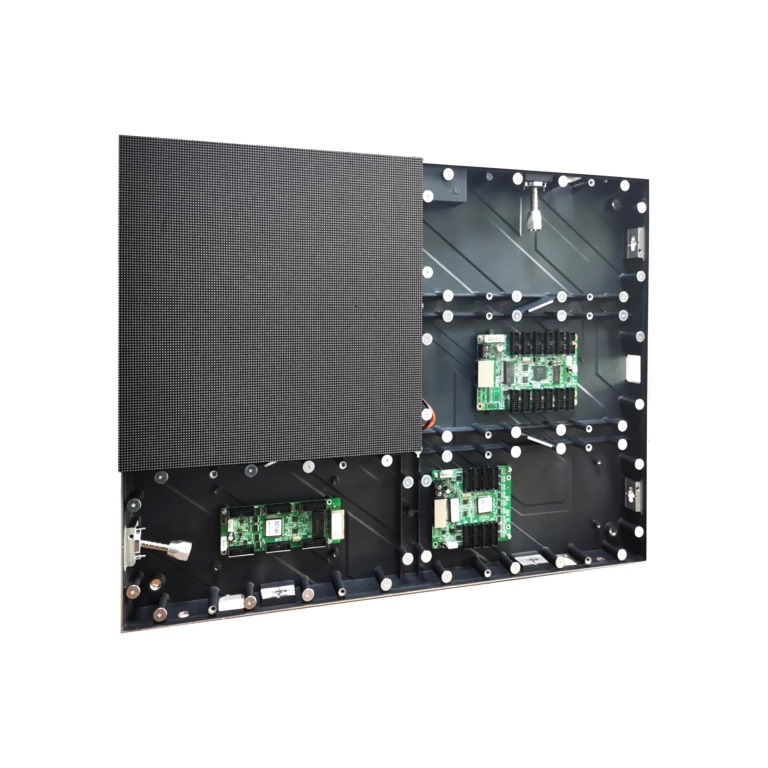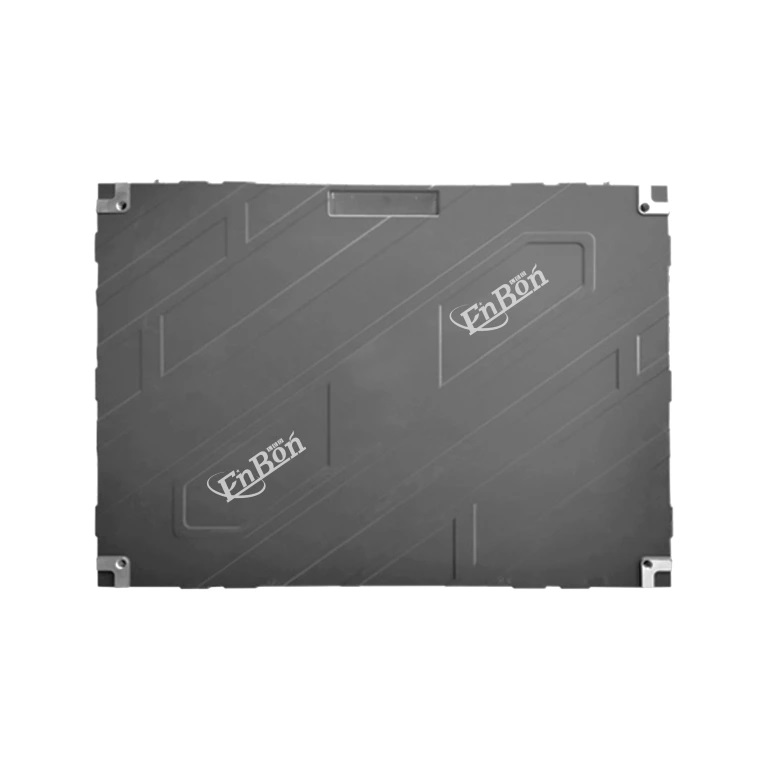Enbon FS-Plus Series
LED Screen Indoor Use
Small Pitch TV LED Display
Small Pixel Pitch LED Display
Advertising LED Display Screen
P1.86 Indoor Fixed LED Display Screen
Enbon FS-Plus series is a LED display screen uses for indoor staging, exhibitions, shopping malls and other social events. The weight of the box is 40% lighter than the traditional iron box, which saves a lot of costs. Anti-knock design to avoid damage to the module, reducing maintenance and improve work efficiency. High brightness and high contrast maintain the suction cup tool before use. The iron plate is installed on the back of the module and is easy to disassemble and assemble. Current sharing gives consistent power to panel, in case of any panel power supply failure. With bringhtness control that you could adjust brightness degree to the resultt you want.
┃ Product Parameters
Pixel Pitch | 1.25, 1.53, 1.86, 2.5, 3 |
LED lamp | SMD1010(P1.25) SMD1515(P1.53, P1.86) SMD2020(P2.5, P3) |
Brightness | 500nits(P1.25) 600nits(P1.53) 800nits(P1.86) 900nits(P2.5, P3) |
Module pixel | 256*128dots(P1.25) 208*104dots(P1.53) 172*86dots(P1.86) 128*64dots(P2.5) 104*52dots(P3) |
Cabinet pixel | 534*400dots(P1.25) 405*304dots(P1.53) 341*256dots(P1.86) 256*192dots(P2.5) 213*160dots(P3) |
Module size | 320*160mm (P1.25, P1.53, P1.86, P2.5, P3) |
Cabinet size | 640*480*85mm(P1.25, P1.53, P1.86, P2.5, P3) |
Module weight | 0.5kg(P1.25, P1.53, P1.86, P2.5, P3) |
Cabinet Weight | 5.5kg(P1.25, P1.53, P1.86, P2.5, P3) |
Work humidity | 10% ~ 90% |
Work temperature | ﹣20 ~﹢65℃ |
Operating system | AV, S-Video, VGA, DVI, YPbPr, HDMI, SDI |
Brightness control | 256 level |
Max Power | 500 w/sqm(P1.25, P1.53, P1.86, P2.5, P3) |
| Average Power | 160 w/sqm(P1.25, P1.53, P1.86) 200 w/sqm(P2.5, P3) |
| IP rating | IP40 |
| Control way | Synchronous/Asynchronous |
Viewing Angle | ≥160° (horizontal), ≥160° (vertical) |
| Density | 695556dots/m2(P1.25) 401111dots/m2(P1.53) 284444dots/m2(P1.86) 160000dots/m2(P2.5) 111111dots/m2(P3) |
Cabinet Materiel | Die-casting Aluminum |
┃ Product Display


┃ Frequently Asked Questions about led display solutions
Q: What are the possible reasons for a function cabinet?
A: 220V power cable does not connect well Data cable problem Receiving card faulty.
Q: What are the possible reasons of a module can't function?
A: Power supply faulty improper connection of power cables.
Q: What is the possible reason of line lamps off?
A: Flat cable does connect not well or it is off previous output fault or current line input faulty.
Q: What is the lifetime of led display?
A: The operational lifetime of an LED Display is determined by the lifetime of the LED. LED Manufacturers estimate the LED lifetime to be 100,000 hours under certain operating conditions. LED Display end of lifetime is when the frontal brightness has decreased to 50% of original brightness.
Q: How to make a decision to buy an led display?
A: Step 1 What is the purpose of buying LED Display ?To pass on Information For Rental Purposes Step 2 In what environment will the led display be used?Indoor / Outdoor / Semi Outdoor / Outdoor and Indoor Step 3 Minimum distance of the audience?(Viewing distance)Step 4 What is the estimated size of led display you want?Step 5 What will be displayed on the Led Display ?Step 6 How will the led display be installed?
┃ FAQ
Q: What method do you use to improve luminance and color uniformity?
A: The most important thing is to find out is what your screen manufacturer does to fix the inherent non-uniformity issues found in all LEDs. The method that yields the best results is the PWM correction method, and it often produces a screen that is cheaper than extreme binning methods, because the screen manufacturer does not need to purchase such tight binning lots from the LED manufacturers in order to achieve uniformity. Also, it enables the user to recalibrate the screen as the LEDs become dimmer over the course of several years.
Q: Are correction coefficients used for each pixel or only for each module?
A: For best results, correction coefficients should be provided for each pixel. Correction coefficients for the module can reduce or eliminate the patchwork quilt effect that shows modules with different brightness and color, but it cannot completely remove the boundary differences between different modules and will do nothing to eliminate the dirty window effect caused by pixel-to-pixel uniformity differences
Q: How many correction coefficients are used for each pixel?
A: It is possible to produce correction only for luminance and white point. A screen of this type will use 3x1 correction coefficients (3 coefficients for each pixel). A full color corrected screen will use 3x3 coefficients (9 coefficients for each pixel).
Q; Are the PWM coefficients stored in the modules in addition to storing them in the video controller?
A: The coefficients need to be stored in the video controller in order to perform the video signal processing; however, it is also very convenient to store them in a type of flash memory on the module. This not only provides a backup for the coefficients, but it also enables the module to automatically update the coefficient database in the video controller when it is moved or replaced.
Contact Us | Enbon
If you are interested in our products for large commercial display solutions, please contact us.
Our team will give you the best service thanks so many.
Feel Free | Contact Enbon
The first thing we do is meeting with our clients and talk through their goals on a future project.
During this meeting, feel free to communicate your ideas and ask lots of questions.
Recommended | Enbon
They are all manufactured according to the strictest international standards.
Our products have received favor from both domestic and foreign markets.
They are now widely exporting to 200 countries.